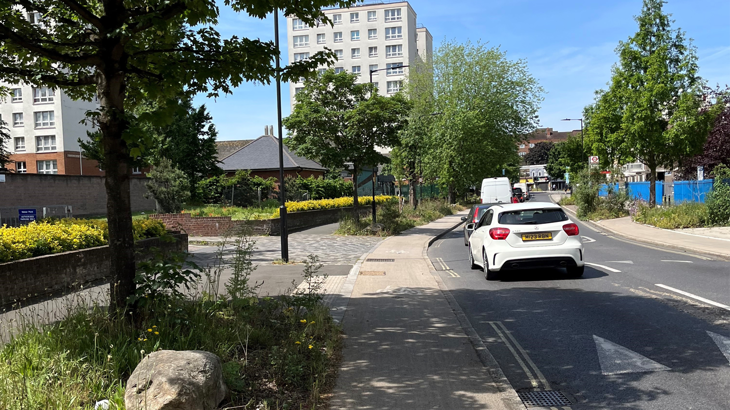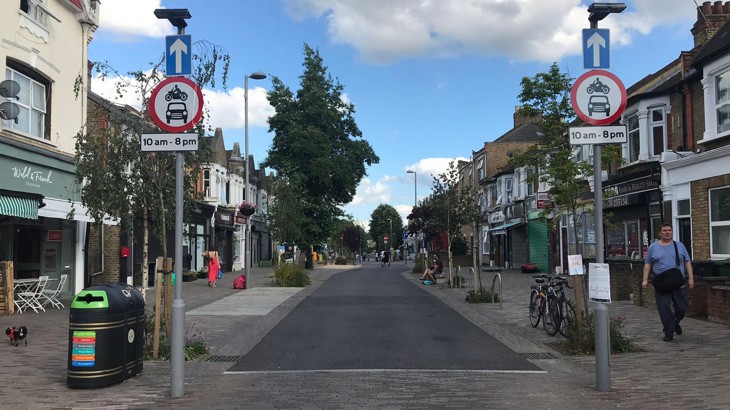Complementary to traffic restrictions within an LTN, improvements to the boundary roads are essential for a low traffic neighbourhood to be fair and successful.

Boundary road improvements could include:
- New or improved pedestrian and cycle crossings, reducing the severance created by major roads and enabling longer walking and cycling trips through adjacent neighbourhoods,
- provision of protected cycle infrastructure, particularly on key strategic routes into or across the city,
- provision of bus priority measures such as bus lanes
- widening and resurfacing of footways and replacement of car parking with cycle parking, greening and trees,
- consolidation of loading bays, including potential relocation to side streets,
- major junction improvements or redesign, increased green time along boundary roads, and signal phase improvements.
Particular consideration must be given to those LTN boundary roads where sensitive receptors such as schools and residential properties are located or which have a high place function, such as high streets.
These are often at the heart of local communities, providing essential amenities, and should not be dominated by through traffic.
Once low-traffic neighbourhoods have been implemented on either side of a high street, local communities will experience the benefits of reduced through traffic.
They may demand the two neighbourhoods be joined up by restricting through traffic on the high street.
This can be done through timed or permanent restrictions to motor vehicles, creating new public space and delivering even greater benefits across the entire community.
An example of this transformation is Francis Road in Waltham Forest, formerly a congested and polluted B Road which has been transformed into a thriving high street (see Figure 6a).

Figure 6a: Francis Road, Waltham Forest (Image: Alejandra Leal @alelealv)

